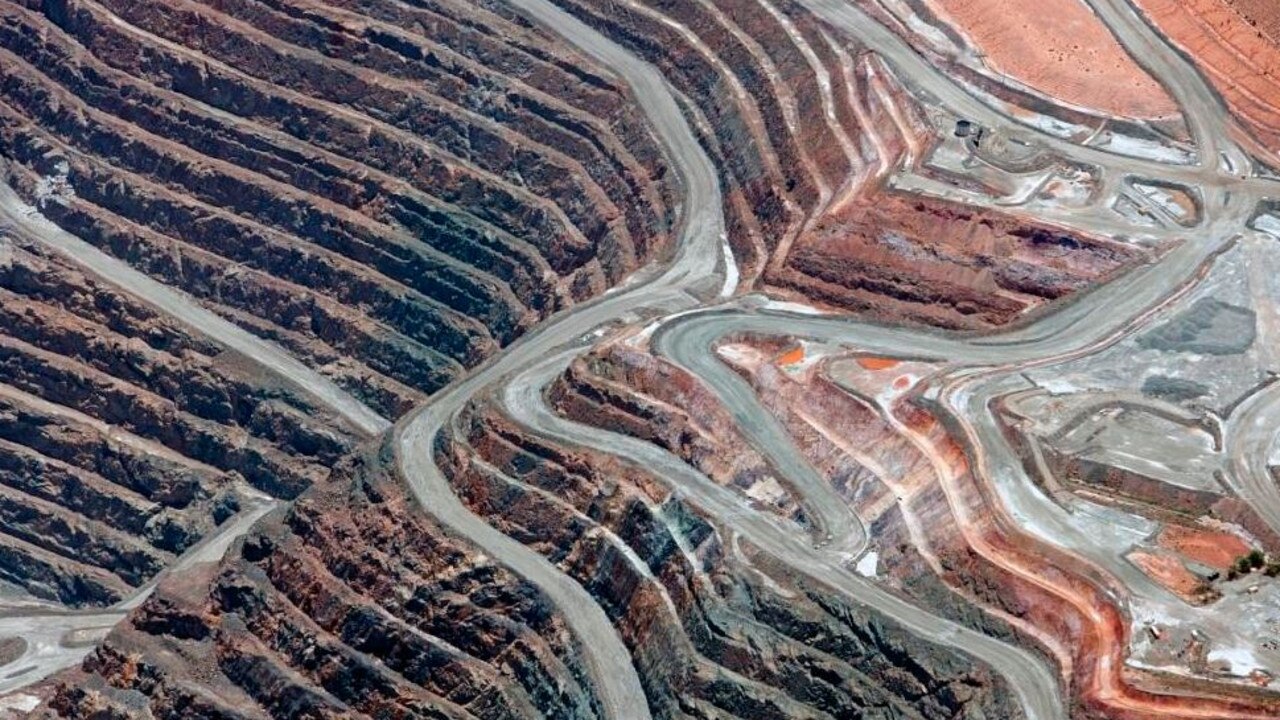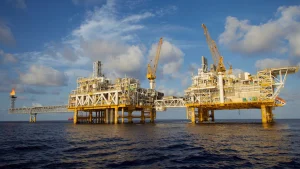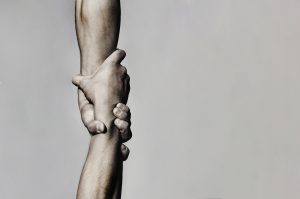Western Australia (WA) stands as a colossal player in the global mining industry, renowned for its vast reserves of iron ore, gold, and other valuable minerals. As the world steps into an era increasingly driven by technological advances, Artificial Intelligence (AI) emerges as a key player. This article delves into how AI could shape the future of mining in WA, examining both its potential benefits and associated challenges.
Current State of Western Australian Mining & AI
Economic Impact and Industry Scale
- Economic Backbone: The mining sector in Western Australia (WA) is a major economic driver. It significantly contributes to the state’s GDP and accounts for a large portion of Australia’s export earnings.
- Employment Provider: The industry is a major employment sector in WA, providing jobs directly in mining operations and indirectly in support services like logistics, equipment supply, and engineering.
- Export Powerhouse: WA is a global leader in mining exports, particularly iron ore, which is in high demand, especially from countries like China. The state also exports substantial quantities of nickel, gold, and liquefied natural gas (LNG).
Resource Wealth
- Iron Ore Dominance: WA is the largest iron ore producer globally, with the Pilbara region being the primary production area. Iron ore from WA is crucial for global steel production.
- Other Minerals: Besides iron ore, WA has significant deposits of gold and nickel, vital for various industries, including electronics and renewable energy sectors.
- LNG Reserves: The state’s northwest shelf and other regions are rich in natural gas, processed into LNG for export, playing a critical role in the global energy market.
Technological Advancements and AI Integration
- Adoption of AI: The mining industry in WA is increasingly adopting AI and automation. This includes autonomous haulage and drilling systems, advanced data analytics for exploration, and predictive maintenance of machinery.
- Efficiency and Productivity: AI applications have led to improved operational efficiency and productivity. AI-driven predictive analytics help in optimizing resource extraction and processing.
- Environmental Monitoring: AI is being used for environmental monitoring and management, aiding in sustainable mining practices. This includes land rehabilitation, water management, and monitoring biodiversity impacts.
Challenges and Opportunities
- Environmental Concerns: The industry faces challenges in reducing its environmental footprint, including land degradation, water usage, and carbon emissions.
- Sustainable Practices: There’s an increasing demand for sustainable mining practices. This includes efficient use of resources, reducing waste, and minimizing the ecological impact of mining operations.
- Community Engagement: Mining operations must balance economic benefits with the impact on local communities and indigenous groups, including land rights and cultural considerations.
AI’s Role in Addressing Challenges
- Operational Efficiency: AI helps in optimizing mining operations, reducing waste, and improving yield, which can indirectly benefit the environment.
- Safety Improvements: AI and automation reduce the need for human presence in hazardous mining areas, improving overall safety.
- Data-Driven Decisions: AI enables better decision-making through real-time data analysis, leading to more efficient and responsible mining practices.
Future Outlook
- Increasing AI Adoption: The trend towards increased AI integration in mining operations is expected to continue, focusing on improving efficiency, safety, and environmental management.
- Balancing Act: The industry must balance the economic benefits of AI with potential challenges, including workforce transition due to automation and ensuring ethical AI use.
- Regulatory Frameworks: Developing robust regulatory frameworks to manage the impact of AI and automation in mining will be crucial for sustainable growth.
Pros of AI in Western Australian Mining
1. Increased Efficiency and Productivity
- AI-Driven Machinery: Advanced AI systems can control machinery like drilling rigs, trucks, and loaders. Unlike human-operated equipment, these AI-driven machines can operate continuously without breaks, leading to significant increases in productivity.
- Reduced Downtime: AI algorithms excel in predictive maintenance. By analyzing data from equipment sensors, they can predict and prevent equipment failures before they occur, substantially reducing downtime and maintenance costs.
- Optimized Mining Operations: AI can analyze geological data to identify the most efficient ways to extract resources. This includes determining the best drilling locations and depths, optimizing the use of explosives for extraction, and planning the most efficient transport routes within the mine.
- Resource Efficiency: AI enables more precise extraction of minerals, reducing waste and improving yield. This means more product from the same amount of raw material, leading to better resource utilization.
2. Enhanced Safety for Workers
- Reduced Human Exposure to Hazardous Environments: Many mining operations are inherently dangerous. By automating these processes, AI reduces the need for human workers in these hazardous environments, which can significantly decrease the incidence of work-related injuries and fatalities.
- Real-Time Monitoring and Response: AI systems can continuously monitor conditions such as air quality, wall stability, and equipment performance. In the event of a dangerous anomaly, these systems can trigger alarms and initiate safety protocols, potentially saving lives.
- Training and Simulation: AI can also be used to create realistic training simulations for workers, preparing them for various scenarios they might encounter in the mine. This can improve overall safety awareness and preparedness.
3. Better Environmental Management
- Environmental Impact Monitoring: AI can process data from various sources, like satellite imagery and on-site sensors, to monitor the environmental impact of mining activities. This includes tracking changes in landscape, water quality, and local ecosystems.
- Resource Conservation: By optimizing mining processes, AI reduces the environmental footprint of mining operations. More efficient resource extraction means less land disturbance and a reduced volume of waste material.
- Energy Management: AI systems can optimize energy use in mining operations, leading to lower carbon emissions. This can be achieved by optimizing fuel consumption in mining vehicles and machinery, and by integrating renewable energy sources into the mining grid.
- Regulatory Compliance: AI tools can assist in ensuring that mining operations comply with environmental regulations. By continuously monitoring environmental parameters, these systems can help mining companies maintain adherence to environmental standards and avoid penalties.
By integrating AI into the Western Australian mining sector, the industry can achieve not only economic gains but also make significant strides in worker safety and environmental stewardship. However, it’s important to balance these benefits with careful consideration of the potential downsides, such as job displacement and ethical concerns.
Cons of AI in Western Australian Mining
1. Job Displacement Concerns
- Impact on Unskilled and Semi-Skilled Workers: Automation and AI in mining are likely to reduce the demand for unskilled and semi-skilled labor. Tasks that were traditionally performed by humans, such as drilling, blasting, and truck driving, can be automated, potentially leading to significant job losses in these areas.
- Skills Gap: As AI and automation technologies advance, there’s a growing need for workers with different skill sets, such as those skilled in AI, robotics, and data analysis. This shift creates a skills gap, where the current workforce may not possess the necessary skills for the new jobs being created, leading to unemployment or underemployment.
- Community Impact: Mining often forms the economic backbone of local communities in Western Australia. Job losses in mining due to AI and automation could have far-reaching effects on these communities, affecting not just the miners but also those in supporting industries.
2. Technological Reliability and Cybersecurity Risks
- System Failures: AI and automated systems can malfunction. In a mining context, this could mean incorrect drilling, mishandled explosives, or malfunctioning autonomous vehicles. Such failures not only disrupt operations but can also pose safety risks.
- Cybersecurity Vulnerabilities: Increased reliance on AI and digital technologies makes mining operations more vulnerable to cyberattacks. Hackers could potentially take control of automated systems, steal sensitive data, or even cause physical damage to equipment.
- Data Integrity and Dependence: Decision-making in AI-driven mining operations heavily relies on data. If this data is inaccurate or tampered with, it can lead to poor decisions, inefficiencies, and even safety hazards.
3. Ethical and Regulatory Challenges
- Data Privacy Concerns: The use of AI in mining involves collecting and analyzing large amounts of data, some of which may be sensitive. There are concerns about who has access to this data, how it is used, and how the privacy of individuals (including employees) is protected.
- Bias and Fairness: AI systems can inherit biases present in their training data or algorithms. In the context of mining, this could manifest in biased decision-making related to resource allocation, environmental management, or even worker safety.
- Regulatory Frameworks: The mining industry, particularly in relation to AI, requires robust regulatory frameworks to ensure safe, ethical, and effective operations. However, developing and enforcing these regulations can be challenging, as technology often evolves faster than the laws governing it.
- Accountability and Liability: In case of accidents or environmental incidents involving AI systems, determining liability can be complex. Questions arise such as who is responsible – the technology provider, the mining company, or the operators?
In summary, while AI has the potential to revolutionise the mining industry in Western Australia, it brings with it a range of concerns. Addressing these effectively will require a concerted effort from industry leaders, policymakers, workers, and communities, ensuring that the transition towards a more AI-driven industry is both equitable and secure.
Future Prospects and Conclusion: AI in Western Australian Mining
The Growing Role of AI
- Integration Across Operations: AI is expected to become more deeply integrated into various aspects of mining operations in Western Australia. This includes exploration, where AI can analyze geological data to identify potential new mining sites, and in operations, where AI can optimize drilling, blasting, and transportation for efficiency and safety.
- Predictive Analytics: AI’s role in predictive maintenance will likely expand, with algorithms becoming more sophisticated in anticipating equipment failures, thus reducing downtime and maintenance costs.
- Automation Proliferation: The trend towards increased automation in mining operations will continue. This includes not only the use of autonomous vehicles and machinery but also the automation of decision-making processes in response to real-time data.
Balancing Advantages and Disadvantages
- Economic Benefits vs. Job Displacement: While AI and automation promise significant economic benefits through increased efficiency and productivity, there is a crucial need to address job displacement issues, especially for unskilled labor. Training and reskilling programs will be essential to help the workforce transition to new roles created by these technological advancements.
- Enhanced Safety vs. Dependence on Technology: While AI can enhance safety in mining operations, over-reliance on technology can create new vulnerabilities. Continuous evaluation of safety protocols and emergency response plans in conjunction with AI technologies will be necessary.
- Environmental Management vs. Ethical and Regulatory Complexity: AI offers tools for better environmental management but also raises complex ethical and regulatory questions. Transparent and inclusive discussions among stakeholders are needed to develop guidelines that balance technological advancement with ethical considerations.
Collaboration and Regulation
- Stakeholder Collaboration: Effective collaboration among industry leaders, policymakers, workers, and communities is crucial. This includes joint efforts in shaping AI strategies that benefit the industry while addressing concerns such as job displacement and environmental impact.
- Regulatory Frameworks: Governments will need to develop robust regulatory frameworks that keep pace with technological advancements. These regulations should ensure safe, ethical, and effective use of AI in mining while supporting innovation.
Preparing for the Future
- Investment in R&D: Continuous investment in research and development is essential to drive forward the integration of AI in mining. This includes not only technological R&D but also research into the social, economic, and environmental impacts of AI in mining.
- Adapting to Change: The mining industry must remain agile and adaptable to changes in technology and global markets. This includes exploring new opportunities, such as mining for minerals critical to technologies like electric vehicles and renewable energy systems.
- Community Engagement and Education: Engaging with local communities and educating the public about the benefits and challenges of AI in mining will be important in gaining broader societal support.
Conclusion
The future of Western Australian mining is set to be significantly influenced by AI. This journey promises considerable rewards but also presents unique challenges. A balanced, informed, and collaborative approach is vital in navigating this future, ensuring that the benefits of AI are maximised while its risks are carefully managed. The sector’s ability to innovate while maintaining a commitment to sustainability, safety, and ethical practices will be key to its success in the AI-driven era of mining.













